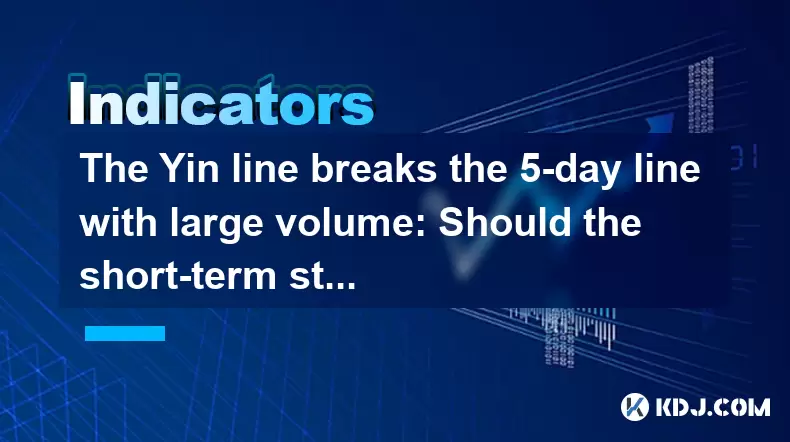-
 Bitcoin
Bitcoin $119600
0.45% -
 Ethereum
Ethereum $4671
8.16% -
 XRP
XRP $3.250
2.78% -
 Tether USDt
Tether USDt $0.9999
0.01% -
 BNB
BNB $838.0
3.17% -
 Solana
Solana $198.5
12.77% -
 USDC
USDC $0.9997
-0.01% -
 Dogecoin
Dogecoin $0.2396
6.18% -
 TRON
TRON $0.3547
2.21% -
 Cardano
Cardano $0.8583
9.20% -
 Chainlink
Chainlink $24.42
13.29% -
 Hyperliquid
Hyperliquid $44.08
1.42% -
 Stellar
Stellar $0.4492
2.37% -
 Sui
Sui $3.915
6.09% -
 Bitcoin Cash
Bitcoin Cash $612.9
3.02% -
 Hedera
Hedera $0.2627
5.34% -
 Ethena USDe
Ethena USDe $1.000
-0.03% -
 Avalanche
Avalanche $24.94
7.83% -
 Litecoin
Litecoin $132.6
10.48% -
 Toncoin
Toncoin $3.439
1.39% -
 UNUS SED LEO
UNUS SED LEO $9.212
2.34% -
 Shiba Inu
Shiba Inu $0.00001371
4.89% -
 Uniswap
Uniswap $11.54
1.13% -
 Polkadot
Polkadot $4.211
7.67% -
 Dai
Dai $0.9998
-0.03% -
 Cronos
Cronos $0.1649
-1.62% -
 Ethena
Ethena $0.7975
-1.46% -
 Pepe
Pepe $0.00001235
9.15% -
 Bitget Token
Bitget Token $4.445
0.46% -
 Aave
Aave $323.7
8.18%
The Yin line breaks the 5-day line with large volume: Should the short-term stop loss?
When a Yin line breaks the 5-day line with large volume in crypto, consider a short-term stop loss, but analyze market context and set it wisely to manage risk effectively.
Jun 04, 2025 at 11:14 am

The concept of a Yin line breaking the 5-day line with large volume is a significant technical analysis signal in the cryptocurrency market. This event often prompts traders to consider their positions, especially regarding short-term stop losses. Let's delve into this phenomenon and explore whether it's advisable to implement a short-term stop loss under these conditions.
Understanding the Yin Line and the 5-Day Line
In technical analysis, a Yin line typically refers to a bearish candlestick, indicating that the closing price is lower than the opening price. On the other hand, the 5-day line represents a moving average calculated over the past five trading days. When a Yin line breaks below the 5-day line, it suggests a potential shift in market sentiment from bullish to bearish.
The Role of Large Volume
Large volume accompanying the break of the 5-day line by a Yin line is a critical factor. High trading volume indicates strong market participation and can validate the bearish signal. It suggests that many traders are actively selling, which could lead to further downward price movement.
Should You Implement a Short-Term Stop Loss?
The decision to implement a short-term stop loss when a Yin line breaks the 5-day line with large volume depends on various factors, including your overall trading strategy, risk tolerance, and the specific cryptocurrency you are trading.
Analyzing Market Context
Before making a decision, it's essential to consider the broader market context. Is the break of the 5-day line part of a larger bearish trend, or is it a temporary dip in an otherwise bullish market? Analyzing other technical indicators, such as the Relative Strength Index (RSI) or the Moving Average Convergence Divergence (MACD), can provide additional insights into the market's direction.
Setting a Stop Loss
If you decide to implement a short-term stop loss, setting the stop loss level is crucial. A common approach is to place the stop loss just below the recent low or at a significant support level. This helps to minimize potential losses if the price continues to decline.
- Identify the recent low: Look at the chart to find the most recent low price point.
- Determine significant support levels: Use technical analysis tools to identify key support levels that the price might reach.
- Set the stop loss: Place the stop loss just below the recent low or at the identified support level.
Monitoring and Adjusting the Stop Loss
Once the stop loss is set, it's important to monitor the market closely and be prepared to adjust the stop loss level if necessary. If the price shows signs of recovery, you might consider moving the stop loss up to lock in profits or reduce potential losses.
Risk Management and Position Sizing
Effective risk management is essential when dealing with stop losses. Consider your position size and ensure that the potential loss from a stop loss trigger does not exceed your risk tolerance. A general rule of thumb is to risk no more than 1-2% of your trading capital on any single trade.
Psychological Factors
The decision to implement a stop loss also involves psychological factors. Fear of missing out (FOMO) or the reluctance to accept a loss can cloud judgment. It's crucial to stick to your trading plan and not let emotions dictate your actions.
Case Studies and Examples
To illustrate the concept, let's look at a few case studies from the cryptocurrency market where a Yin line breaking the 5-day line with large volume led to different outcomes.
- Case Study 1: Bitcoin (BTC) - In a scenario where Bitcoin's price showed a Yin line breaking the 5-day line with large volume, traders who implemented a stop loss might have minimized their losses as the price continued to decline. Those who did not implement a stop loss could have faced significant losses.
- Case Study 2: Ethereum (ETH) - In another instance, Ethereum experienced a similar technical pattern, but the price quickly recovered. Traders who implemented a stop loss might have been stopped out prematurely, while those who held their positions could have benefited from the rebound.
Conclusion
The decision to implement a short-term stop loss when a Yin line breaks the 5-day line with large volume is complex and depends on multiple factors. It's essential to consider the broader market context, set appropriate stop loss levels, and manage risk effectively. By doing so, you can make informed decisions that align with your trading strategy and risk tolerance.
Frequently Asked Questions
Q1: How can I identify a significant support level for setting a stop loss?
A1: To identify a significant support level, you can use technical analysis tools such as trend lines, Fibonacci retracement levels, and previous price lows. These levels often act as barriers where the price might find support and reverse.
Q2: What other technical indicators should I consider alongside the Yin line and 5-day line?
A2: Other technical indicators that can provide additional insights include the Relative Strength Index (RSI), Moving Average Convergence Divergence (MACD), and Bollinger Bands. These indicators can help confirm the bearish signal or suggest potential reversals.
Q3: How often should I adjust my stop loss after setting it?
A3: The frequency of adjusting your stop loss depends on market volatility and your trading strategy. In highly volatile markets, you might need to adjust your stop loss more frequently to protect profits or minimize losses. In less volatile markets, adjustments can be less frequent.
Q4: Can a stop loss guarantee that I won't lose more than my predetermined amount?
A4: A stop loss does not guarantee that you won't lose more than your predetermined amount, especially in highly volatile markets where prices can gap. However, it helps to manage risk by limiting potential losses to a level you are comfortable with.
Disclaimer:info@kdj.com
The information provided is not trading advice. kdj.com does not assume any responsibility for any investments made based on the information provided in this article. Cryptocurrencies are highly volatile and it is highly recommended that you invest with caution after thorough research!
If you believe that the content used on this website infringes your copyright, please contact us immediately (info@kdj.com) and we will delete it promptly.
- Meme Coins: Chasing the 2025 Surge – Which Will Moonshot?
- 2025-08-13 10:25:23
- Bitcoin's Wild Ride: Rally, Pullback, and What's Next
- 2025-08-13 10:25:23
- Bitcoin, Bitmax, and Institutional Demand: A New Era of Crypto Investment
- 2025-08-13 10:45:12
- Solana, ROAM, and Airdrops: What's the Buzz in 2025?
- 2025-08-13 11:35:13
- Riding the Crypto Wave: NFTs, DeFi, and the Market's $4.2T High
- 2025-08-13 11:35:13
- Cold Wallet: Cashback, Crypto, and Cutting Gas Fees Like a Boss
- 2025-08-13 11:45:17
Related knowledge

What does it mean when the +DI and -DI cross frequently in the DMI indicator but the ADX is flattening?
Aug 11,2025 at 03:15am
Understanding the DMI Indicator ComponentsThe Directional Movement Index (DMI) is a technical analysis tool composed of three lines: the +DI (Positive...

What does the sudden appearance of a "dark cloud cover" candlestick pattern during an uptrend indicate?
Aug 13,2025 at 11:35am
Understanding the 'Dark Cloud Cover' Candlestick PatternThe dark cloud cover is a bearish reversal pattern in technical analysis that typically appear...

What does it mean when the moving average, MACD, and RSI all send buy signals simultaneously?
Aug 11,2025 at 01:42pm
Understanding the Convergence of Technical IndicatorsWhen the moving average, MACD, and RSI all generate buy signals at the same time, traders interpr...

What does it mean when both the KDJ indicator and the RSI show overbought signals simultaneously?
Aug 13,2025 at 11:35am
Understanding the KDJ Indicator in Cryptocurrency TradingThe KDJ indicator is a momentum oscillator derived from the Stochastic Oscillator, widely use...

What does it mean when the price is trading above the SAR indicator but the red dots are densely packed?
Aug 09,2025 at 11:49pm
Understanding the SAR Indicator and Its Visual SignalsThe SAR (Parabolic Stop and Reverse) indicator is a technical analysis tool used primarily to de...

What does it mean when the candlestick chart forms a "Morning Star" but trading volume is sluggish?
Aug 12,2025 at 06:28pm
Understanding the Morning Star Candlestick PatternThe Morning Star is a three-candle bullish reversal pattern commonly observed in cryptocurrency pric...

What does it mean when the +DI and -DI cross frequently in the DMI indicator but the ADX is flattening?
Aug 11,2025 at 03:15am
Understanding the DMI Indicator ComponentsThe Directional Movement Index (DMI) is a technical analysis tool composed of three lines: the +DI (Positive...

What does the sudden appearance of a "dark cloud cover" candlestick pattern during an uptrend indicate?
Aug 13,2025 at 11:35am
Understanding the 'Dark Cloud Cover' Candlestick PatternThe dark cloud cover is a bearish reversal pattern in technical analysis that typically appear...

What does it mean when the moving average, MACD, and RSI all send buy signals simultaneously?
Aug 11,2025 at 01:42pm
Understanding the Convergence of Technical IndicatorsWhen the moving average, MACD, and RSI all generate buy signals at the same time, traders interpr...

What does it mean when both the KDJ indicator and the RSI show overbought signals simultaneously?
Aug 13,2025 at 11:35am
Understanding the KDJ Indicator in Cryptocurrency TradingThe KDJ indicator is a momentum oscillator derived from the Stochastic Oscillator, widely use...

What does it mean when the price is trading above the SAR indicator but the red dots are densely packed?
Aug 09,2025 at 11:49pm
Understanding the SAR Indicator and Its Visual SignalsThe SAR (Parabolic Stop and Reverse) indicator is a technical analysis tool used primarily to de...

What does it mean when the candlestick chart forms a "Morning Star" but trading volume is sluggish?
Aug 12,2025 at 06:28pm
Understanding the Morning Star Candlestick PatternThe Morning Star is a three-candle bullish reversal pattern commonly observed in cryptocurrency pric...
See all articles

























































































